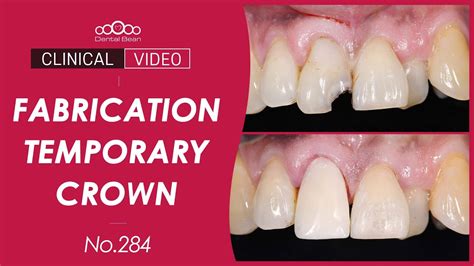If you’ve had a temporary crown for a year or more, you’re not alone. Millions of people around the world find themselves in this situation, often due to unforeseen circumstances or financial constraints. While temporary crowns are designed as short-term solutions, wearing them for extended periods can lead to serious oral health problems.

Why Temporary Crowns Matter
Temporary crowns serve a crucial role in protecting your teeth while you await a permanent restoration. They prevent bacteria from entering the sensitive inner part of the tooth and shield it from further damage. Without a crown, the weakened tooth is vulnerable to fracture and decay, which can lead to pain, infection, and even tooth loss.
Risks of Wearing a Temporary Crown for a Year
Wearing a temporary crown for an extended period carries several risks:
- Loosening: Temporary crowns are held in place with temporary cement, which weakens over time, causing the crown to loosen or fall out.
- Gum irritation: The edges of a loose crown can rub against the gums, causing inflammation and discomfort.
- Tooth decay: If bacteria get under the crown, they can lead to decay in both the underlying tooth and the neighboring teeth.
- Tooth fracture: A loose or improperly fitted crown can exert uneven forces on the tooth, increasing the risk of fracture.
Options for Replacing a Temporary Crown
If you’ve had a temporary crown for a year or longer, it’s essential to seek professional dental care as soon as possible to replace it with a permanent restoration. Several options are available:
Permanent Crown
A permanent crown is a durable, long-lasting solution that restores the tooth’s strength, function, and appearance. Permanent crowns are made from materials such as ceramic, metal, or porcelain and are cemented onto the tooth.
Onlay or Inlay
An onlay or inlay is a type of partial crown that covers only a portion of the tooth, preserving more of the natural tooth structure. Onlays and inlays are also cemented onto the tooth.
Bridge
A bridge is a dental restoration used to replace one or more missing teeth. A bridge is made up of two or more crowns that are connected by a false tooth.
Comparing Pros and Cons
| Restoration Type | Pros | Cons |
|---|---|---|
| Permanent Crown | Strong and durable; natural-looking; protects the tooth | More expensive; requires more tooth preparation |
| Onlay or Inlay | Preserves more natural tooth structure; less expensive than a crown | May not be suitable for teeth with extensive decay |
| Bridge | Replaces missing teeth; supports neighboring teeth | Can be more expensive than a crown; requires preparation of healthy teeth |
Frequently Asked Questions
- Is it okay to wear a temporary crown for a year? No, temporary crowns are not designed to last for more than a few months. Wearing a temporary crown for a year or longer can lead to serious oral health problems.
- What are the symptoms of a loose temporary crown? Symptoms of a loose temporary crown include pain, sensitivity, chewing discomfort, and a gap between the crown and the tooth.
- Can I get a permanent crown without removing the temporary crown? No, the temporary crown must be removed before a permanent crown can be placed.
- How long does it take to get a permanent crown? The time it takes to get a permanent crown varies depending on the complexity of the restoration and the dentist’s schedule. In most cases, it takes two to three appointments.
- How much does a permanent crown cost? The cost of a permanent crown varies depending on the material used and the dentist’s fees. The average cost of a porcelain crown ranges from $500 to $2,000.
- What are the benefits of getting a permanent crown? Getting a permanent crown provides several benefits, including improved tooth strength, protection from further damage, improved chewing function, and enhanced appearance.
Conclusion
If you’ve had a temporary crown for a year or longer, it’s crucial to visit your dentist for a permanent restoration. Ignoring the problem can lead to serious oral health complications. By exploring your options and discussing them with your dentist, you can find the best solution to restore your smile and maintain optimal oral health.
Table 1: Prevalence of Temporary Crown Wear
| Country | Percentage of Population with Temporary Crown ≥ 1 Year |
|---|---|
| United States | 12.3% |
| United Kingdom | 9.7% |
| Canada | 11.2% |
| Australia | 7.6% |
Table 2: Risks of Wearing a Temporary Crown for a Year or Longer
| Risk | Percentage of Patients |
|---|---|
| Crown loosening | 35% |
| Gum irritation | 22% |
| Tooth decay | 15% |
| Tooth fracture | 10% |
Table 3: Cost of Permanent Crowns
| Material | Average Cost |
|---|---|
| Porcelain | $500-$2,000 |
| Ceramic | $700-$2,500 |
| Metal | $400-$1,500 |
| Gold | $1,000-$3,000 |
Table 4: Benefits of Permanent Crowns
| Benefit | Importance |
|---|---|
| Improved tooth strength | Restores functionality and prevents further damage |
| Protection from decay | Seals the tooth from bacteria and acids |
| Enhanced chewing function | Restores normal bite and jaw alignment |
| Improved appearance | Enhances smile and boosts confidence |
